
Cosworth is a British automotive engineering company founded in London in 1958, specialising in high-performance internal combustion engines, powertrain, and electronics; for automobile racing (motorsport) and mainstream automotive industries. Cosworth is based in Northampton, England, with American facilities in Indianapolis, Shelby Charter Township, Michigan and Mooresville, North Carolina.
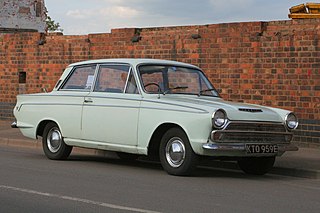
The Ford Cortina is a car that was built by Ford of Britain in various guises from 1962 to 1982, and was the United Kingdom's best-selling car of the 1970s.

The Ford Sierra is a mid-size car or large family car that was built by Ford Europe from 1982 to 1993. It was designed by Uwe Bahnsen, Robert Lutz and Patrick le Quément. The code used during development was "Project Toni". Its name came from the Spanish word for mountain range.

The Ford Focus is a compact car manufactured by the Ford Motor Company and created under Alexander Trotman's Ford 2000 plan, which aimed to globalize model development and sell one compact vehicle worldwide. The original Focus was primarily designed by Ford of Europe's German and British teams.
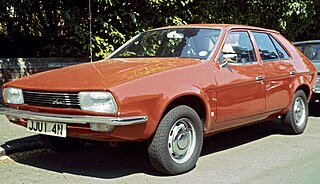
The Princess is a large family car which was produced in the United Kingdom by the Austin-Morris division of British Leyland from 1975 until 1981. The car inherited a front-wheel drive / transverse engine configuration from its predecessor, the Austin/Morris 1800 range. This was still unusual in Europe for family cars of this type and gave the Princess a cabin space advantage when compared with similarly sized cars from competing manufacturers.

The Ford Fiesta is a supermini marketed by Ford since 1976 over seven generations. It has been manufactured in the United Kingdom, Germany, Spain, Australia, Chile, Brazil, Argentina, Venezuela, Mexico, Taiwan, China, India, Thailand, and South Africa.

The Ford Orion was a small family car that was produced by Ford Europe from 1983-1993. A total of 3,534,239 units were sold during the car's ten-year production life.
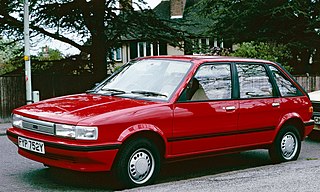
The Austin Maestro is a five-door hatchback small family car that was produced from 1982 to 1987 by British Leyland, and from 1988 until 1994 by Rover Group. The car was produced at Morris' former Oxford plant, also known as Cowley. Today, the redeveloped factory produces the BMW Mini. An MG-branded performance version was sold as the MG Maestro from 1983 until 1991. Although later models were sometimes referred to as the Rover Maestro, the model never wore the Rover badge. A three-box (non-hatchback) car, the Montego, was a derivative of the Maestro.

The Ford Capri is a fastback coupé built by Ford Motor Company between 1968 and 1986, designed by American Philip T. Clark, who was also involved in the design of the Ford Mustang. It used the mechanical components from the Mk2 Ford Cortina and was intended as the European equivalent of the Ford Mustang. The Capri went on to be a highly successful car for Ford, selling nearly 1.9 million units in its lifetime. A wide variety of engines was used in the Capri throughout its production lifespan, which included the Essex and Cologne V6 at the top of the range, whilst the Kent straight-four and Taunus V4 engines were used in lower specification models. Although the Capri was not officially replaced, the second-generation Probe was effectively its replacement after the later car's introduction to the European market in 1994.
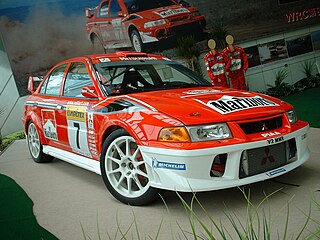
Group A was a set of motorsport regulations introduced by FIA covering production-derived vehicles intended for outright competition in touring car racing and rallying. In contrast to the short-lived Group B and Group C, the Group A referred to production-derived vehicles limited in terms of power, weight, allowed technology and overall cost. Group A was aimed at ensuring numerous privately owned entries in races.

The Austin Maxi is a medium-sized 5-door hatchback small family car that was produced by Austin and later British Leyland between 1969 and 1981. It was the first British five-door hatchback.

Formula Ford is an entry-level class of single seater, open-wheel formula racing. The various championships held across the world form an important step for many prospective Formula One drivers. Formula Ford has traditionally been regarded as the first major stepping stone into formula racing after karting. The series typically sees professional career minded drivers enter alongside amateurs and enthusiasts. Success in Formula F can lead directly to other junior formulae such as a Formula Renault 2.0 and Formula Three, or the W Series for female drivers.

The Ford Escort is a small family car which was manufactured by Ford Europe from 1968 to 2004. The Ford Escort name was also applied to several small car types produced in North America by Ford between 1981 and 2004.

Gilbern, Gilbern Sports Cars (Components) Ltd , was a Welsh car manufacturer from 1959 to 1973, based in Llantwit Fardre, Pontypridd, Glamorgan, Wales.

Ian Callum is a Scottish car designer who has worked for Ford, TWR, Aston Martin, and in 1999 became the Director of Design for Jaguar Cars, which then merged into Jaguar Land Rover in 2013, a position he held until mid 2019. His younger brother Moray Callum is Vice President, Design, Ford Motor Company.
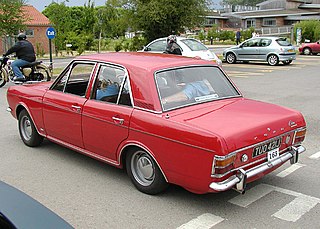
Roy D. Haynes is a British automobile designer. Haynes worked for Ford as Model Line Director for Ford of Europe where he was responsible for the design of the 1966 Cortina MkII and worked on the design for the 1966 Ford Zodiac/Zephyr Mk4.
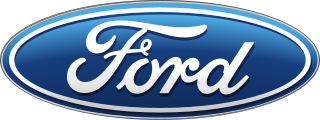
Ford of Europe GmbH is a subsidiary company of Ford Motor Company founded in 1967 in Cork, Ireland, with headquarters in Cologne, Germany.

Stephen Harper is a British designer who works primarily in the automotive industry. He is responsible for a number of cars including the MG F, Ford Escort RS Cosworth, and the 2010 Volvo C70. Founding design education took place at the Royal College of Art in London in 1979-1980 following earning an apprenticeship to the Austin Motor Company in Longbridge, Birmingham in 1978.
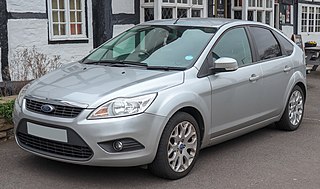
The Ford Focus Mk 2 is an automobile which was produced by Ford from 2005 to 2010. It was launched at the Paris Motor Show on September 25, 2004 as a three and five-door hatchback and an estate, although the new car was previewed, in 4-door saloon form, as the 'Focus Concept' developed by Ford Europe at the Beijing Motor Show in mid-2005.
The FIA 2-Litre World Rally Cup was a sub-section of the World Rally Championship from 1993 to 1999. It involved mostly 1,600 cc (97.6 cu in) or 2,000 cc (122.0 cu in), naturally aspirated, front wheel drive cars. The series was discontinued due to high costs, and the new Super 2000 class was amalgamated into the Production World Rally Championship, whilst the 1600cc cars were generally modified for usage in the Super 1600 class, which formed the basis of the Junior World Rally Championship in 2001. The most successful manufacturer was SEAT, who won the title three times in a row with their SEAT Ibiza Kit Car.























